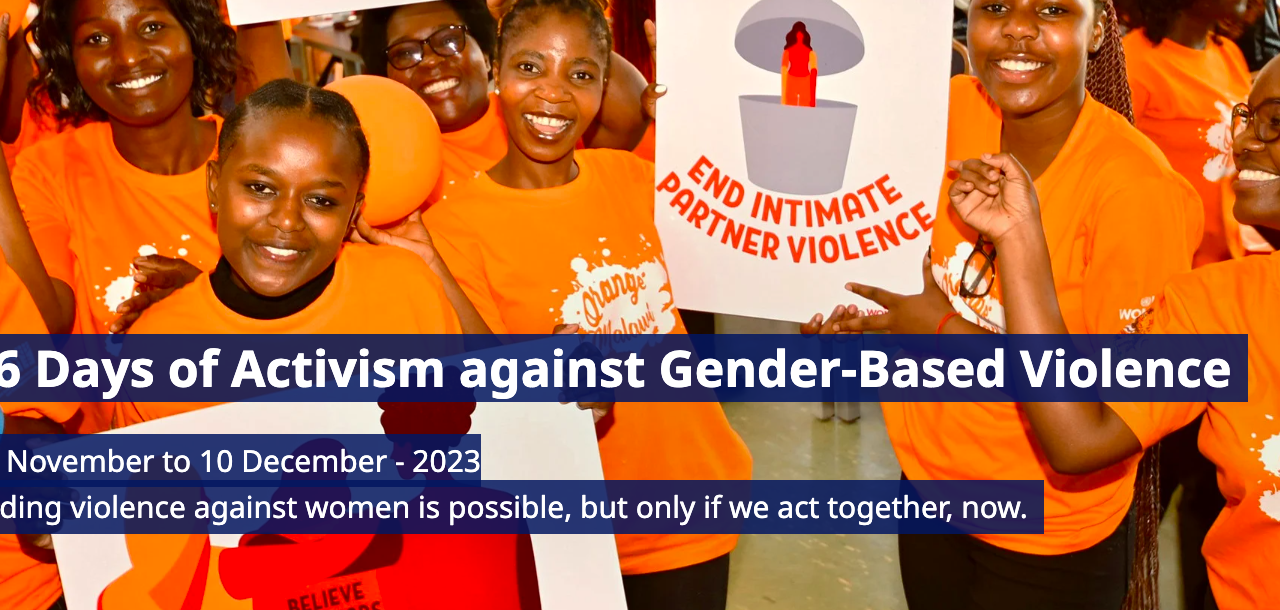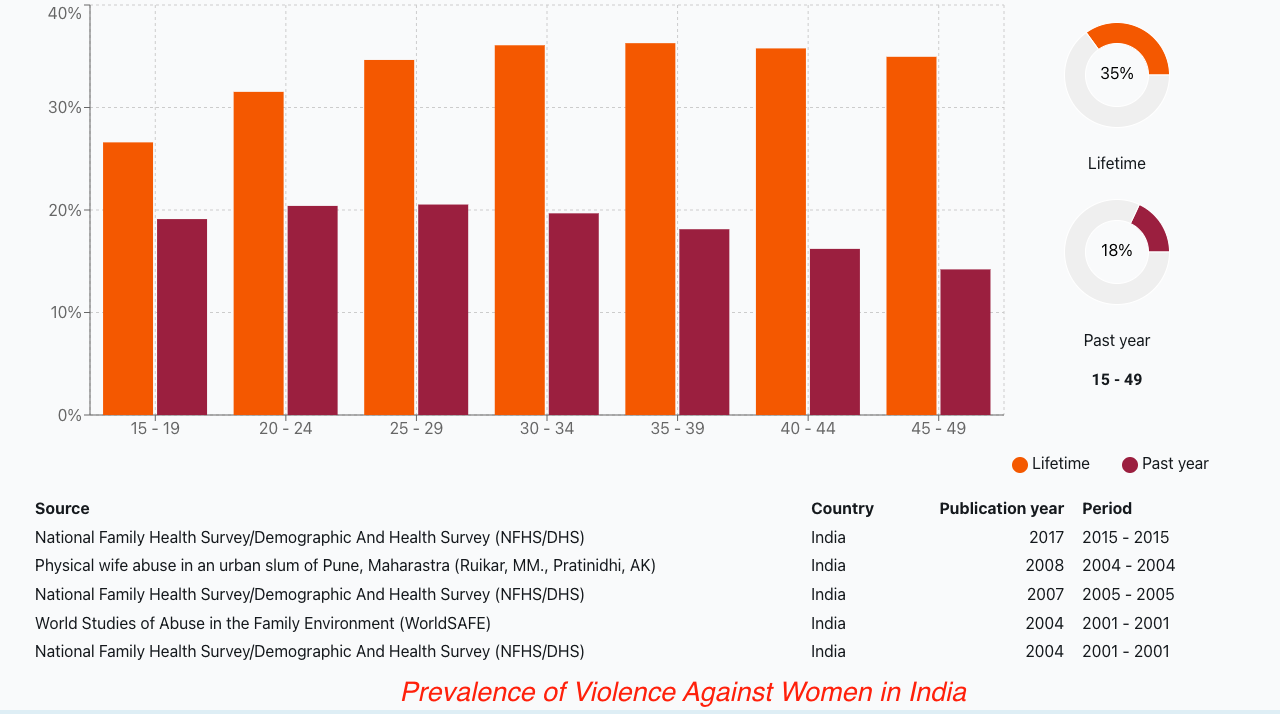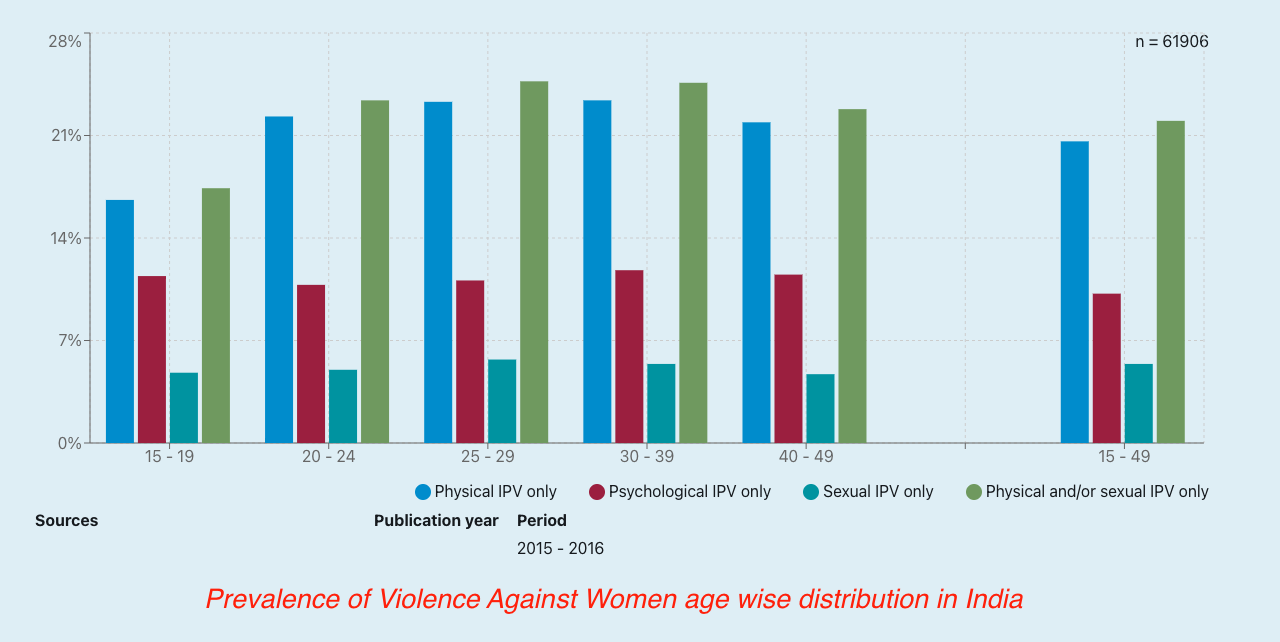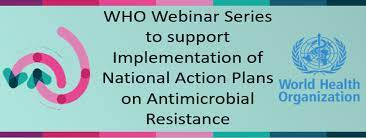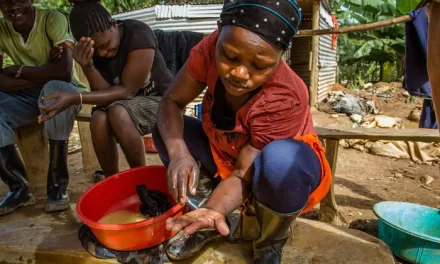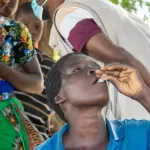Key facts
- Violence against women – particularly intimate partner violence and sexual violence – is a major public health problem and a violation of women’s human rights.
- Estimates published by WHO indicate that globally about 1 in 3 (30%) of women worldwide have been subjected to either physical and/or sexual intimate partner violence or non-partner sexual violence in their lifetime.
- Most of this violence is intimate partner violence. Worldwide, almost one third (27%) of women aged 15-49 years who have been in a relationship report that they have been subjected to some form of physical and/or sexual violence by their intimate partner.
- Violence can negatively affect women’s physical, mental, sexual, and reproductive health, and may increase the risk of acquiring HIV in some settings.
- Violence against women is preventable.
- The health sector has an important role to play to provide comprehensive health care to women subjected to violence, and as an entry point for referring women to other support services they may need.
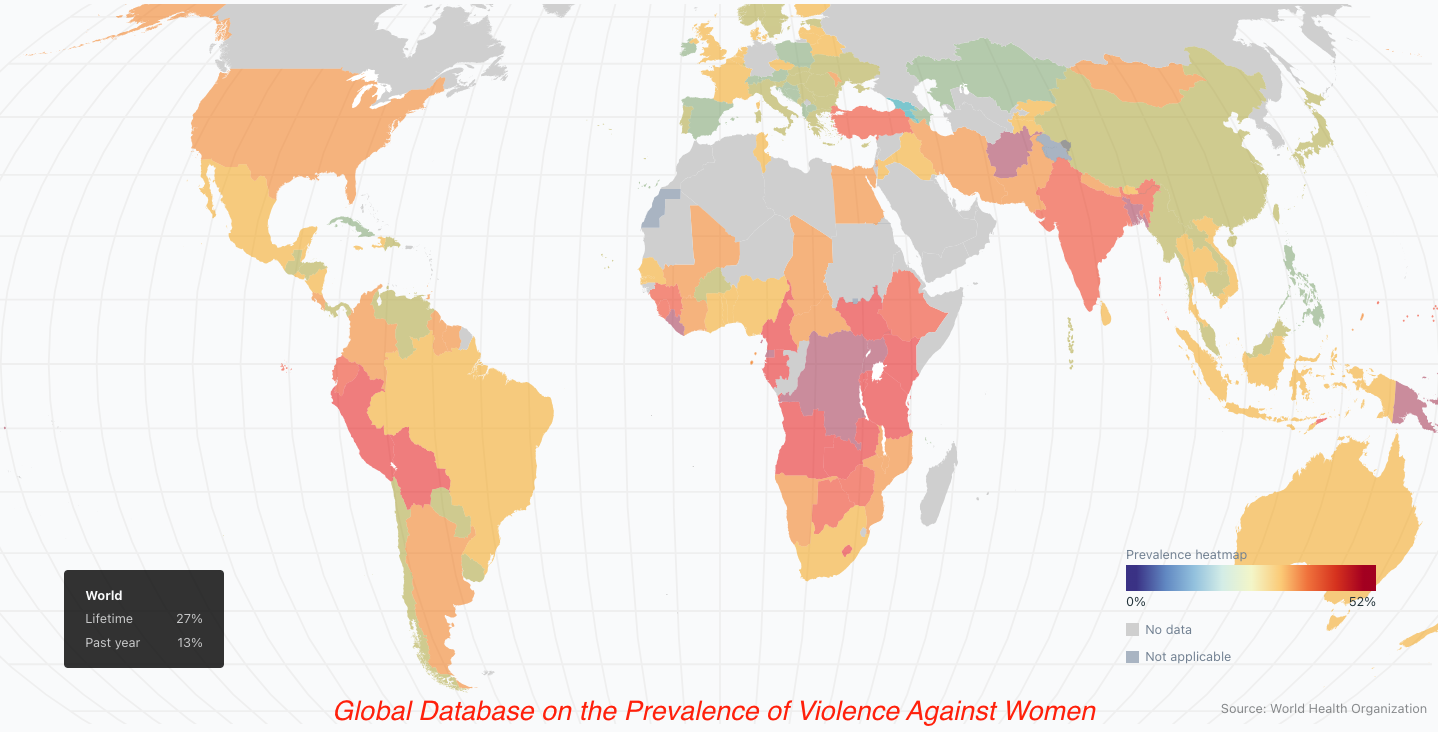
The global 16 Days of Activism against Gender-Based Violence is a key international moment to call for an end to violence against women and girls. It runs from 25th November (the International Day for the Elimination of Violence Against Women) until 10th December, Human Rights Day.
In support of this campaign, the United Nations Secretary-General’s UNiTE by 2030 initiative calls for global action to increase awareness, galvanise advocacy efforts and share knowledge and innovations to help end all types of violence against women and girls. In 2023, the UNiTE campaign theme is Invest to Prevent Violence against Women & Girls.
In every country and culture, more action is needed to ensure women in all their diversity live free of violence and coercion. Health impacts of violence can last a lifetime, affecting physical, mental, sexual, and reproductive health. WHO plays a key role in bringing attention to and responding to violence against women as a public health, gender equality and human rights issue.
Key messages
- Gender-based violence is a global public health, gender equality and human rights priority. It remains a systemic crisis, affecting 1 in 3 women worldwide. Risks increase during humanitarian emergencies or when women face greater curtailments of their essential rights, such as access to education, healthcare or freedom of movement.
- While violence affects women everywhere, women and girls in certain groups – such as those living with disability, adolescent girls and older women – often face even greater difficulty to have their voices heard and to access support.
- Too often people respond to violence by blaming or shaming the victim – for instance, for what they wore or what they did, or because they belong to a particular group, or people hesitate to offer support because it takes place in ‘private’ or among people we know.
- We must change the story, challenge misogyny and violence, and make sure women are heard. Women and girls everywhere should be able to access the help they need, when they need it, so we can end violence once and for all.
- Health workers are often the first, sometimes only, point of contact for women experiencing violence. They can provide compassionate care for survivors by offering first-line support, medical examination and treatment, and referrals to other essential service s. This requires investing in training and resources to ensure appropriate care.
Factors associated with intimate partner violence and sexual violence against women
Intimate partner and sexual violence is the result of factors occurring at individual, family, community and wider society levels that interact with each other to increase or reduce risk (protective). Some are associated with being a perpetrator of violence, some are associated with experiencing violence and some are associated with both.
Risk factors for both intimate partner and sexual violence include:
- lower levels of education (perpetration of sexual violence and experience of sexual violence);
- a history of exposure to child maltreatment (perpetration and experience);
- witnessing family violence (perpetration and experience);
- antisocial personality disorder (perpetration);
- harmful use of alcohol (perpetration and experience);
- harmful masculine behaviours, including having multiple partners or attitudes that condone violence (perpetration);
- community norms that privilege or ascribe higher status to men and lower status to women;
- low levels of women’s access to paid employment; and
- low level of gender equality (discriminatory laws, etc.).
Factors specifically associated with intimate partner violence include:
- past history of exposure to violence;
- marital discord and dissatisfaction;
- difficulties in communicating between partners; and
- male controlling behaviours towards their partners.
Factors specifically associated with sexual violence perpetration include:
- beliefs in family honour and sexual purity;
- ideologies of male sexual entitlement; and
- weak legal sanctions for sexual violence.
Gender inequality and norms on the acceptability of violence against women are a root cause of violence against women.
Health consequences
Intimate partner (physical, sexual and psychological) and sexual violence cause serious short- and long-term physical, mental, sexual and reproductive health problems for women. They also affect their children’s health and wellbeing. This violence leads to high social and economic costs for women, their families and societies. Such violence can:
- Have fatal outcomes like homicide or suicide.
- Lead to injuries, with 42% of women who experience intimate partner violence reporting an injury as a consequence of this violence (3).
- Lead to unintended pregnancies, induced abortions, gynaecological problems, and sexually transmitted infections, including HIV. WHO’s 2013 study on the health burden associated with violence against women found that women who had been physically or sexually abused were 1.5 times more likely to have a sexually transmitted infection and, in some regions, HIV, compared to women who had not experienced partner violence. They are also twice as likely to have an abortion (3).
- Intimate partner violence in pregnancy also increases the likelihood of miscarriage, stillbirth, pre-term delivery and low birth weight babies. The same 2013 study showed that women who experienced intimate partner violence were 16% more likely to suffer a miscarriage and 41% more likely to have a pre-term birth (3).
- These forms of violence can lead to depression, post-traumatic stress and other anxiety disorders, sleep difficulties, eating disorders, and suicide attempts. The 2013 analysis found that women who have experienced intimate partner violence were almost twice as likely to experience depression and problem drinking.
- Health effects can also include headaches, pain syndromes (back pain, abdominal pain, chronic pelvic pain) gastrointestinal disorders, limited mobility and poor overall health.
- Sexual violence, particularly during childhood, can lead to increased smoking, substance use, and risky sexual behaviours. It is also associated with perpetration of violence (for males) and being a victim of violence (for females).
Impact on children
- Children who grow up in families where there is violence may suffer a range of behavioural and emotional disturbances. These can also be associated with perpetrating or experiencing violence later in life.
- Intimate partner violence has also been associated with higher rates of infant and child mortality and morbidity (through, for example diarrhoeal disease or malnutrition and lower immunization rates).
Social and economic costs
The social and economic costs of intimate partner and sexual violence are enormous and have ripple effects throughout society. Women may suffer isolation, inability to work, loss of wages, lack of participation in regular activities and limited ability to care for themselves and their children.
Prevention and response
There is growing evidence on what works to prevent violence against women, based on well-designed evaluations. In 2019, WHO and UN Women with endorsement from 12 other UN and bilateral agencies published RESPECT women – a framework for preventing violence against women aimed at policy makers.
Each letter of RESPECT stands for one of seven strategies: Relationship skills strengthening; Empowerment of women; Services ensured; Poverty reduced; Enabling environments (schools, work places, public spaces) created; Child and adolescent abuse prevented; and Transformed attitudes, beliefs and norms.
For each of these seven strategies there are a range of interventions in low and high resource settings with varying degree of evidence of effectiveness. Examples of promising interventions include psychosocial support and psychological interventions for survivors of intimate partner violence; combined economic and social empowerment programmes; cash transfers; working with couples to improve communication and relationship skills; community mobilization interventions to change unequal gender norms; school programmes that enhance safety in schools and reduce/eliminate harsh punishment and include curricula that challenges gender stereotypes and promotes relationships based on equality and consent; and group-based participatory education with women and men to generate critical reflections about unequal gender power relationships.
RESPECT also highlights that successful interventions are those that prioritize safety of women; whose core elements involve challenging unequal gender power relationships; that are participatory; address multiple risk factors through combined programming and that start early in the life course.
To achieve lasting change, it is important to enact and enforce legislation and develop and implement policies that promote gender equality; allocate resources to prevention and response; and invest in women’s rights organizations.
Role of the health sector
While preventing and responding to violence against women requires a multi-sectoral approach, the health sector has an important role to play. The health sector can:
- Advocate to make violence against women unacceptable and for such violence to be addressed as a public health problem.
- Provide comprehensive services, sensitize and train health care providers in responding to the needs of survivors holistically and empathetically.
- Prevent recurrence of violence through early identification of women and children who are experiencing violence and providing appropriate referral and support
- Promote egalitarian gender norms as part of life skills and comprehensive sexuality education curricula taught to young people.
- Generate evidence on what works and on the magnitude of the problem by carrying out population-based surveys, or including violence against women in population-based demographic and health surveys, as well as in surveillance and health information systems.
What you can do
Help comes in many forms – we can all play a role in preventing violence against women and girls.
If you are experiencing violence, remember you are not alone and it’s not your fault. It may be helpful, if safe to do so, to reach out to family, friends and neighbours, consult a health worker, or to seek support from a hotline or from specialist services.
If you know of, or are concerned about, someone experiencing violence there are some things you can do – starting with being willing to listen:
- Keep in touch with the person, ensuring that it is safe for them to be in touch with you. They might not be ready to talk, but try to find quiet times when they can talk if they choose to.
- Find out what services for survivors of violence against women are available. Only provide this information directly if you can do so discretely. Allow them to make their own decisions.
- If someone you know needs urgent help for whatever reason, be prepared to call emergency services.
Health workers should provide first-line support, for all kinds of violence:
- Listen closely, with empathy and without judgement.
- Inquire about women’s needs and concerns.
- Validate women’s experiences. Show you believe and understand.
- Enhance their safety.
- Support women to connect with additional services.

